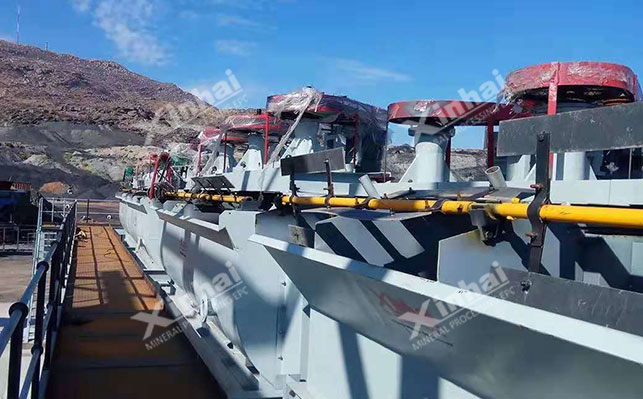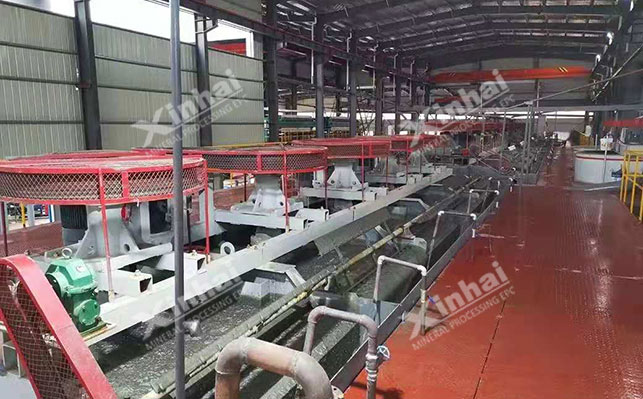
15311826613
Click to add WeChatThe selection of flotation process is usually determined by the properties of gold ore and the specifications of the product. Since flotation can only enrich gold into various sulfide mineral concentrates as much as possible, but cannot ultimately obtain finished gold, many beneficiation plants will use flotation in conjunction with other beneficiation processes.

Common gold ore flotation process flows are mainly the following:
The sulfide ore of the gold-bearing quartz vein is subjected to flotation to obtain a small amount of concentrate, which is then subjected to cyanidation. Compared with the gold mine full mud cyanidation process, the flotation concentrate cyanidation process does not need to grind all the ore, consumes less power, has a small plant area, and has less infrastructure investment.

This process is often used to treat insoluble gold-arsenic ores, gold-zinc ores, and gold-pyrite with particularly high sulfide content, etc. The purpose of roasting is to remove harmful elements such as arsenic and antimony in the cyanidation process.
Most gold-bearing polymetallic sulfide ores will be separated using this process. When flotating such ores, gold will enter the copper concentrate or lead concentrate that is closely associated with it, and the product will be copper-gold concentrate or lead-gold concentrate. The copper-gold concentrate and lead-gold concentrate obtained by flotation will then be sent to the smelter for smelting, and gold will be recovered during the smelting process.

This process is suitable for selecting quartz sulfide ores or gold-bearing pyrrhotite and pyrrhotite ores containing gold, pyrrhotite, chalcopyrite and other sulfide minerals. The easily floatable gold sulfide in the ore is first produced as a concentrate, and then roasted and then cyanided for the gold and silver ores in the exposed sulfide ore or telluride. Because the middlings and tailings after flotation usually contain high levels of gold and silver, cyanidation is also required at this time.

When the cyanidation method cannot completely recover the gold in the ore that coexists with sulfide minerals, the cyanidation treatment followed by flotation can greatly improve the gold recovery rate.
In production, the gold ore dressing process depends on the occurrence and distribution characteristics of gold and other valuable components in the ore, as well as the reserve scale of the ore deposit, plant construction conditions and investment budget. Any kind of gold-containing ore has its own characteristics. Even in the same ore deposit, the properties of the ore in the deep and shallow parts are different, so the separation methods will also be different. The scientific and reasonable gold flotation process must be determined through ore dressing tests.